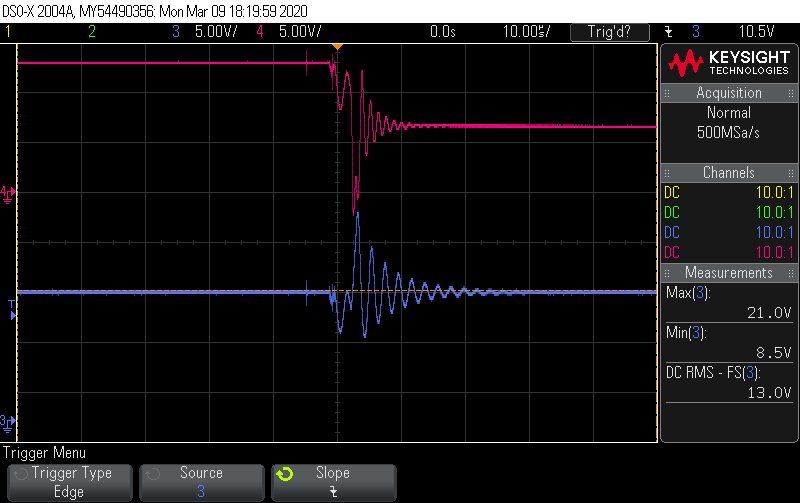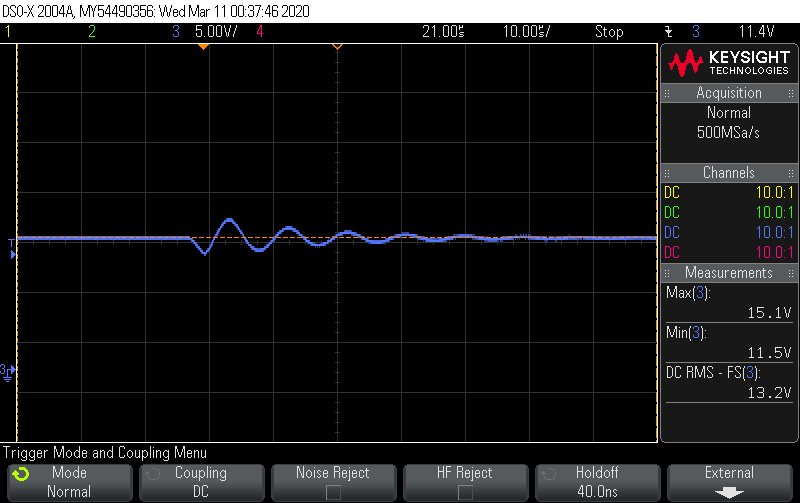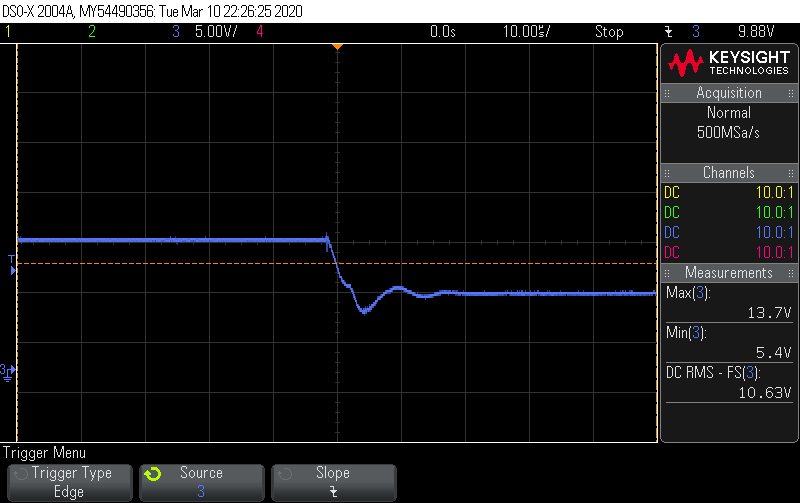Hi TI Team,
We're working with the TPS259570 eFuse in one of our systems. We encountered a strange phenomena when hot shorting the OUT pin to GND.
The device shuts down the output and latches as expected. Our host MCU recognizes the output disconnect and toggles the EN pin to re-enable the output.
We see that the EN pin is being toggled but the output voltage is not re-enabled.
Looking at both IN and OUT pins waveforms during the short circuit, we see quite a bit of ringing. Only a device power cycle re-enables the output - EN pin toggle does not work after the output disconnect latch.
Can it be that after the short circuit and resulting voltage ringing the device enters some kind of latch-up and it's internal logic requires a power cycle? Can it be related to the internal UVP unit that samples the IN pin?
Adding input capacitance resolves this issue when input voltage ringing is reduced. I need to know if a device latch-up is possible due to input pin voltage ringing and that we really understand fixed the problem.
Some scope snapshots...
Input ringing with 0.1uF input cap (Blue Trace) and output ringing with 1uF output cap (Red Trace) - EN pin unresponsive, power cycle required:
Input ringing with 20uF input cap and 10uF ouput cap - EN pin is responsive and re-enables the output properly:
Output with 10uF output cap & 20uF input caps - EN pin is responsive and re-enables the output properly:
Thanks,
S.B.D




